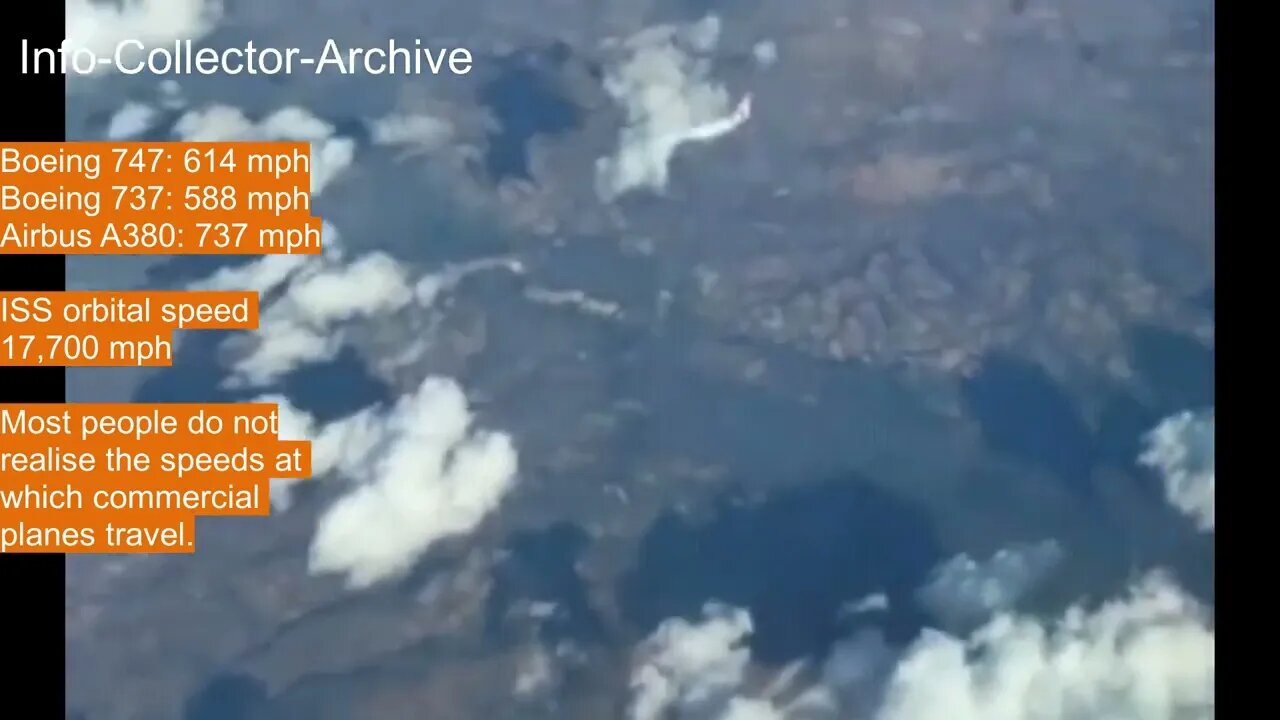Premium Only Content

This Is How Fast You Are Traveling In A Commercial Jet, But You Don't Realize It
How Do You Measure an Airplane’s Speed?
An aircraft’s speed, known as airspeed, is typically measured in four different ways. No matter which type you use, all airspeed is represented in knots.
Indicated Airspeed (IAS)
Indicated airspeed is measured using the aircraft’s pitot tube and static pressure. This measurement is displayed on the pilot’s airspeed indicator, which may be a separate gauge, or as part of a primary flight display or PFD.
True Airspeed (TAS)
True airspeed measures the speed of the aircraft in relation to the surrounding air. As you reach higher altitudes, the IAS will become less accurate, because of lower ambient air pressure.
Groundspeed (GS)
Groundspeed measures the aircraft’s speed in relation to a single point on the ground. Technically, GS is true airspeed corrected for wind.
Calibrated Airspeed (CAS)
Calibrated airspeed is calculated using indicated airspeed corrected for any measurement errors. CAS is particularly useful at lower speeds.
Mach
This type of measurement is generally reserved for jets—and aircraft capable of reaching the sound barrier. Mach can be found by dividing the speed of the aircraft by the speed of sound. That being said, the speed of sound varies at different air pressures.
Maximum Speed for Popular Airplanes
Just like cars, airplanes have speed limits in certain areas. While today’s commercial airplanes won’t take you across the Atlantic Ocean in less than a few hours, most major airliners travel at decent speeds.
Boeing 747: 614 mph
Boeing 737: 588 mph
Airbus A380: 737 mph
Different Speeds of Flying
Just like any other type of vehicle, your speed largely determines what maneuvers you can accomplish. For airplanes, certain speeds are absolutely necessary to carry out a safe transition from ground to air.
At Takeoff
At takeoff, the average speed of a commercial airplane is anywhere between 160 and 180 mph (140 to 156 knots).
Cruising
For most commercial airliners, the airplane’s cruising speed ranges between 550 and 600 mph (478 to 521 knots).
Landing
While landing, speed is largely affected by the aircrafts current weight, commercial airplanes typically land between 130 and 160 mph (112 to 156 knots).
Speeds of Different Aircraft Types
Outside of commercial aviation, airplanes come in a great variety of different use types—some much faster than others.
Private Jets
Private jets can fly at speeds anywhere between 400 and 700 mph (348 to 608 knots), similar to commercial airplanes. Given their smaller size, they generally can’t fly as far as their larger counterparts because of fuel storage constraints. But a handful of ultralong-range jets can fly more than 8,000 miles or 6,952 nautical miles.
Military Airplanes
Military aviation is just as diverse as the rest of the industry. Military aircraft are designed with specific goals in mind, such as surveillance, assault, or cargo transport. Instead of listing the top speed of every military aircraft, here are a few examples from different categories:
Lockheed Martin C-130J (Cargo): 416 mph
Lockheed Martin F-22 (Fighter): 1,500 mph
Boeing KC-135 (Air Refueler): 580 mph
Northrop Grumman B-2 (Bomber): 628 mph
Northrop Grumman RQ-4 (Surveillance): 391 mph
-
 2:14:40
2:14:40
Steven Crowder
4 hours agoBreaking: Minneapolis Catholic Church Shooting Live Coverage
222K237 -
 LIVE
LIVE
Major League Fishing
5 days agoLIVE! - Fishing Clash Team Series: Challenge Cup - Day 4
292 watching -
 LIVE
LIVE
Neil McCoy-Ward
1 hour agoFURY As JD Vance Unleashes HELL On The UK & EU… (What We Know So Far)
156 watching -
 LIVE
LIVE
IrishBreakdown
1 hour agoNotre Dame vs Miami Preview - Inside the Matchup
11 watching -
 LIVE
LIVE
Rebel News
56 minutes agoPoilievre targets Carney on Cdn energy, Smith's AB Next, Ford's crime rant | Buffalo Roundtable
228 watching -
 LIVE
LIVE
The Charlie Kirk Show
1 hour agoHow Trump Governs + Breaking the Barrel + Youth for Christ | Starbuck, Marlow, Knowles | 8.27.2025
4,002 watching -
 LIVE
LIVE
Side Scrollers Podcast
2 hours agoCracker Barrel CANCELS Rebrand + OG YouTuber Has Brain Tumor + More | Side Scrollers IN STUDIO
327 watching -
 LIVE
LIVE
The Mel K Show
1 hour agoMORNINGS WITH MEL K - Reexamining the US relationship with International Banks, Treaties, and NGOs 8-27-25
774 watching -
 LIVE
LIVE
The Shannon Joy Show
3 hours ago🔥🔥SAVE Baby Kit! Hospital Injects 2 Pound Baby With Hep B Vaccine Without Mom’s Consent, Injures Him Severely Then Calls CPS On The Family!🔥🔥
172 watching -
 LIVE
LIVE
Viss
2 hours ago🔴LIVE - Improve Your Battle Royale Play with Tactics & Strategy! - PUBG
129 watching